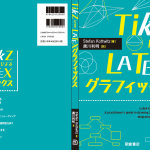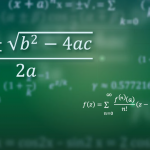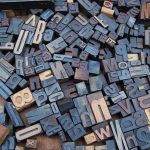I added an update to yesterday’s report, regarding the evening.
Today morning I checked out when I left the hotel, as I planned to go directly from the River Valley Campus to the airport. Again, I got a transfer from the hotel to the River Valley Campus, travelling together with Boris and Leyla in an air-conditioned car just like the previous days. Many participants who stayed in the other hotel went by a big bus provided by River Valley Technologies. Thanks to Kaveh for organizing this and so much more!
The Program
Pavneet Arora started talking about “Typesetting with masonry”. He spoke about importance of design, using type for promotion and for transporting ideas. I remember his words: when is a page well designed? – when there’s an admiration pause, when one looks at that page, awe without envy. So he talked about typography as inspiration, which transcends the printed page. What about TeX, where does it fit in? Learning and using TeX is more than just technology and using a typesetting language – you deal with proper typography, balance, you have to think about legibility, readability and comprehension and how to achieve those. He mentioned balance, proportion, function, clarity, appeal as keywords in this matter, and that density of ornamentation is very different to density of design. Finally he explained the design of his house, referring golden ratio, angles, and who believes that: he typeset $e^{\pi i}+1=0$ into his masonry. I think that’s great!
Jean-luc Doumont’s topic was “Integrating TeX and PDF seamlessly in pdfTeX”. Also a fascinating presentation! While TeX is basically limited to drawing horizontal and vertical lines for producing graphics, pdfTeX is capable of drawing more freely by inserting raw PDF code, it even adds colors. However, TeX and PDF languages are very different. Jean-luc thought about integrating them, which gives some challenges, such as using TeX calculated dimensions in PDF commands, using the same points and the same line width in TeX and in PDF code, or for example doing a rotation in PDF using an angle defined in TeX. We could see a set of solutions and how to use these for creating graphs and designing pages.
Time for a coffee break. Now we’ve got badges with name and affiliation on it.
In the talk “An XML model of CSS3 as an XLaTeX-TeXML-HTML5 stylesheet” by Sukumar Sankar, S Mahalakshmi and L Ganesh we could see an approach of an XML version of CSS which could be used cross-platform. XSLT has been used for mapping from this model to fontspec based TeX templates and to CSS3.
S.K. Venkatesan presented “On the use of TeX as a general markup language for HTML5″.
We still had some time before lunch, so in addition to the program, Kannan M. Moudgalya, Professor on the IIT Bombay made a presentation about spoken tutorials for LaTeX and further topics. He demonstrated the creation of a demo tutorial for Scilab, easily integrating screen output and voice. For such tutorials, the audio could be changed for using various languages while the video remains the same. This keeps barriers for self-learning low, required are just a standard laptop and earphones. With 1 MB per minute a lot of learning material can be stored on one CD. Prof. Moudgalya explained the promotion of FOSS in India and plans for providing Internet bandwidth for universities and government support regarding these topics. Still, LaTeX needs to be popularized in schools and intermediate and advanced tutorials need to be prepared.
Time for lunch! Again we had a very nice buffet.
After lunch, I made the presentation “Bringing together TeX users online: From Usenet to Web 2.0 and beyond”. I talked about online communities, and compared various systems, such as Usenet groups, mailing lists, and web forums such as LaTeX-Community.org. I concluded that Usenet groups and mailing lists are good for discussions, an web forums as well, whereas TeX.SX is outstanding regarding building content and knowledge, accessible and quality oriented. At this occasion I showed how to use TeX.SX for writing a question, automatic duplicate detection, explained how voting and reputation system works and why this is the key to community moderation and to quality.
Since RVT broadcasted the presentations into the Internet, fellow users on TeX.SX could see it and also hear the audio, as commented in the chat.
Manjusha Joshi followed with “A dream of computing and LaTeXing together: A reality with SageTeX”. She showed how useful the SageTeX package is for computing by open source maths system Sage and embedding the results into a TeX document.
Then we had a coffee break again. Next to coffee and tea, RVT people had already arranged the TeX.SX t-shirts, stickers, and all the SE pens and stickers on a table, so that TUG participants can take some what they like. Nice timing, as it arrived yesterday evening and I gave it to RVT in the morning and it was presented right in the break after my talk, when everybody was aware now what TeX.SX is. Apropos timing: right at this break somebody told me, that I would have forget to say something important: where one could buy this t-shirt which he had seen me wearing at the presentation. I pointed to the swag desk: just take one – surprise! Another surprise, but for me: as Prof. Moudgalya got a TeX.SX t-shirt, and he had some promotional stuff with him, he gave me a t-shirt with logo and text of spoken-tutorial.org and IIT Bombay. Further he gave DVDs of the spoken-tutorial project to the participants, containing 11 LaTeX tutorials and 3 XFig tutorials in English and Hindi.
After the break Petr Sojka explained “Why TeX math search is more relevant now than ever”. He compared various math search engines such as MathDex (using the Apache Lucene engine), EgoMath (based on Egothor), Springer’s LaTeXSearch and LeActiveMath, and spoke about challenges such as heterogeneity of math representation, different notations, semantics handling and lack of an established query language and interface. Then he presented the math search engine MIaS (Math Indexer and Searcher), developed for the European Digital Mathematics Library and listed future challenges, such as preprocessing from TeX resp. PDF, copypaste package, embedding TeX math code as second layer into the PDF file, query relaxation option, and more.
The final presentation was by Dominik Wujastyk: “My father’s book: Typesetting and publishing a family memoir”, where he talked about his experiences in producing that book.
Unfortunately I had to leave quickly to catch the plane, so no more time for talking. The airport was about an hour drive away, RVT provided a transfer to me. At the moment I’m waiting in the Bengaluru airport for the the connecting flight, much time for writing this blog post.
This conference has been great, it was well organized and for me it has been comfortable all the time, much thanks to RVT and the TUG.


